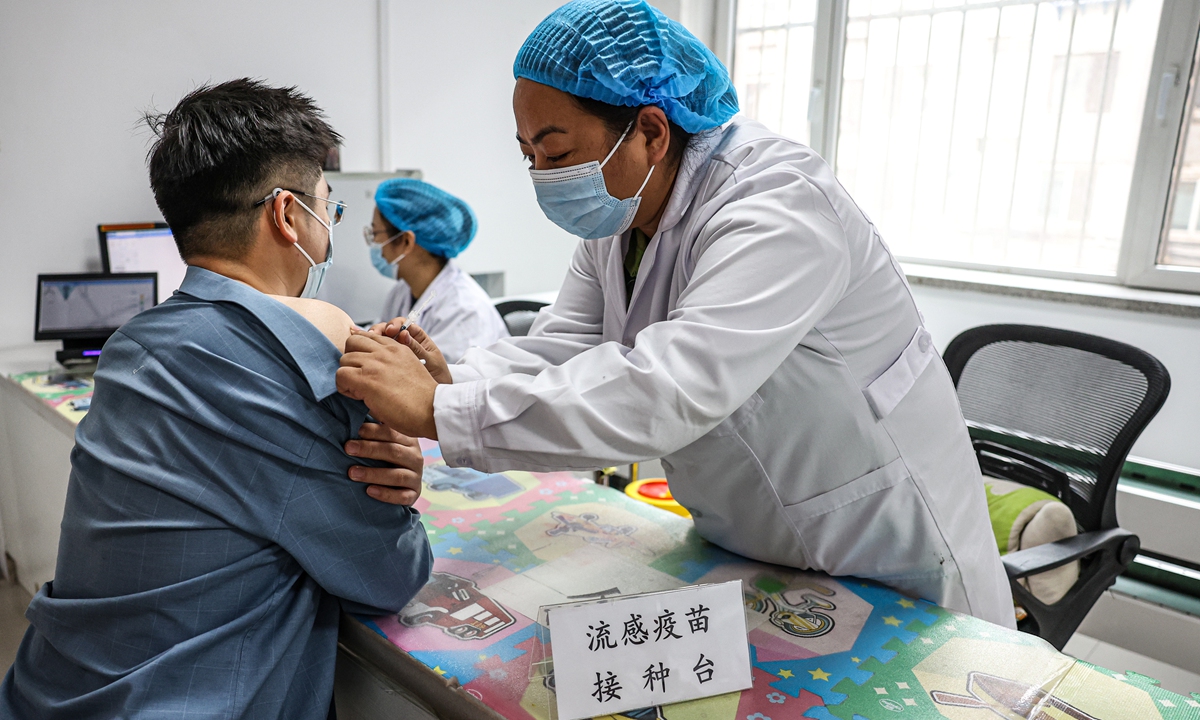JN.1 variant may develop into dominant strain in China; various respiratory diseases may co-exist in winter, spring: NHC

A resident receives a flu vaccine at a community health service center in Shenyang, Northeast China's Liaoning Province, on November 15, 2023. Respiratory diseases have progressed to their peak period of incidence across China, posing a threat to vulnerable groups such as children and the elderly. Photo: VCG
The JN.1 variant may develop into the dominant strain in China due to factors such as its continuous transfer from abroad and the movement of people before and after the Spring Festival, contributing to the increase in COVID-19 cases and increasing the risk of severe illness and death among vulnerable populations, an official from the National Health Commission (NHC) said on Thursday.
Experts predicted that China will continue to see a trend of alternating or simultaneous outbreaks of various respiratory diseases during this winter and spring in 2024, Li Zhengmao from the NHC said at a press conference on Thursday.
The JN.1 variant of COVID-19 has been rapidly spreading around the globe and has already appeared in more than 40 countries, including the US, France, Singapore and India. On December 19, the World Health Organization issued a preliminary risk assessment, listing JN.1 as a "variant of concern" and the WHO also noted that the strain has significant transmission advantages compared to other circulating variants.
Li said at the press conference that monitoring data show that the proportion of the JN.1 variant among locally transmitted cases of COVID-19 in China is currently relatively low but is showing an upward trend. A total of 490 JN.1 variant cases have been reported nationwide, including 443 imported cases, accounting for 90 percent, and 47 local cases.
Existing evidence shows that the JN.1 variant has shown immune evasion and increased transmissibility, but its pathogenicity has not increased, and specific antiviral drugs remain effective, Li said.
Li noted that with the approach of the New Year's Day holidays and the Spring Festival travel rush, there may be an increased risk of infectious disease transmission due to increased population movement.
This week, the number of respiratory disease diagnoses and instances of treatment across medical institutions nationwide has increased compared to last week. The current respiratory diseases are mainly influenza, with a decrease in mycoplasma pneumoniae infections and COVID-19 infections at a low level, NHC spokesperson Mi Feng told the press conference.
Medical services in various regions are returning to normal seasonal levels, Mi added.
But in response to the increasing risk of respiratory disease, NHC officials also called for the public to continue practicing good hygiene habits such as frequent ventilation, hand washing, and social distancing. Elderly people, those with severe chronic underlying diseases, and pregnant women are urged to avoid going to crowded places.
Global Times

